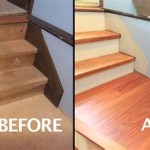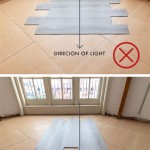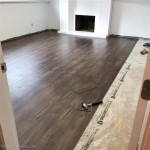Pros and Cons of Laminate Flooring in Bedrooms
Laminate flooring has become a popular choice for homeowners due to its affordability, durability, and ease of installation. When considering flooring options for bedrooms, laminate presents a compelling case with a variety of benefits. However, it also has certain drawbacks that should be considered before making a final decision.
Pros of Laminate Flooring in Bedrooms
One of the most attractive features of laminate flooring is its cost-effectiveness. Compared to hardwood or natural stone, laminate is significantly more budget-friendly, making it an excellent option for homeowners looking to renovate on a tighter budget. This affordability allows for greater flexibility in design and allows homeowners to allocate funds to other areas of their renovation project.
Laminate flooring is exceptionally durable and resistant to scratches, stains, and fading. This makes it a practical choice for bedrooms, particularly those belonging to children or pets. The protective wear layer on top of the laminate resists daily wear and tear, ensuring the flooring maintains its appearance for years to come. This durability translates into long-term cost savings, as the flooring requires infrequent replacement.
Laminate flooring is incredibly easy to install, often featuring a click-and-lock system that eliminates the need for nails or glue. This simplified installation process makes it a viable option for DIY enthusiasts, potentially saving on installation costs. Even for those who prefer professional installation, the ease of installation translates to quicker project completion times.
Laminate flooring is available in a wide array of styles, colors, and textures, mimicking the appearance of various wood species and even stone. This versatility allows homeowners to achieve the desired aesthetic in their bedrooms without the higher cost associated with natural materials. From classic oak to contemporary grey tones, laminate flooring offers a range of options to suit any design preference.
Maintaining laminate flooring is relatively simple. Regular sweeping or vacuuming removes dust and debris, while occasional damp mopping keeps the surface clean. Unlike hardwood, laminate does not require waxing or polishing, making it a low-maintenance flooring solution ideal for busy households. This ease of maintenance contributes to the longevity of the flooring and minimizes the time required for upkeep.
Laminate flooring is generally considered hypoallergenic due to its smooth, non-porous surface. This makes it a suitable choice for individuals with allergies or sensitivities to dust mites, mold, and other allergens that can accumulate in carpets or other porous flooring materials. The easy-to-clean surface further contributes to a healthier indoor environment.
Cons of Laminate Flooring in Bedrooms
While laminate flooring offers numerous benefits, it also has some limitations. One notable drawback is its susceptibility to moisture damage. Spills or excessive moisture can seep into the seams and cause the flooring to warp or buckle. While newer laminate products offer improved moisture resistance, caution is still advised, especially in areas prone to spills or humidity.
Laminate flooring cannot be refinished like hardwood flooring. While its durable surface resists scratches and wear, deep gouges or significant damage may require replacing the affected planks or sections. This lack of refinishing potential can shorten the lifespan of the flooring compared to hardwood options.
Laminate flooring generally feels harder and less forgiving underfoot than carpet or some types of vinyl flooring. This can be a concern for individuals with joint pain or those who prefer a softer, more cushioned surface underfoot. While area rugs can mitigate this issue, it's important to consider the overall comfort level desired in the bedroom.
Laminate flooring can produce a hollow, echoing sound when walked upon, particularly in larger rooms. This can be perceived as less luxurious or comfortable compared to the quieter acoustics of carpet or hardwood. While underlayment can help to absorb some of the sound, it may not completely eliminate the hollow effect.
While laminate flooring can mimic the appearance of hardwood or stone, it lacks the authentic texture and warmth of natural materials. This can be a noticeable difference for those who appreciate the unique characteristics and feel of real wood or stone. The visual and tactile differences may be a deciding factor for some homeowners.

Pros Cons Of Laminate Flooring In The Bedroom Milwaee Remodeling Contractor

Pros And Cons Of 3 Popular Bedroom Flooring Materials

Pros And Cons Of 5 Popular Bedroom Flooring Materials

Bedroom Flooring The Pros And Cons Of Each Type Underlay 4u

Is Vinyl Flooring The Best For Bedrooms Lx Hausys

10 Laminate Flooring Pros And Cons Learn The Essentials

Pros And Cons Of 5 Popular Bedroom Flooring Materials

Laminate Flooring Or Carpet What S Best For Bedroom

Laminate Flooring Review Pros And Cons Elephant Floors

Vinyl Flooring Or Laminate Which Is Better Planeo








